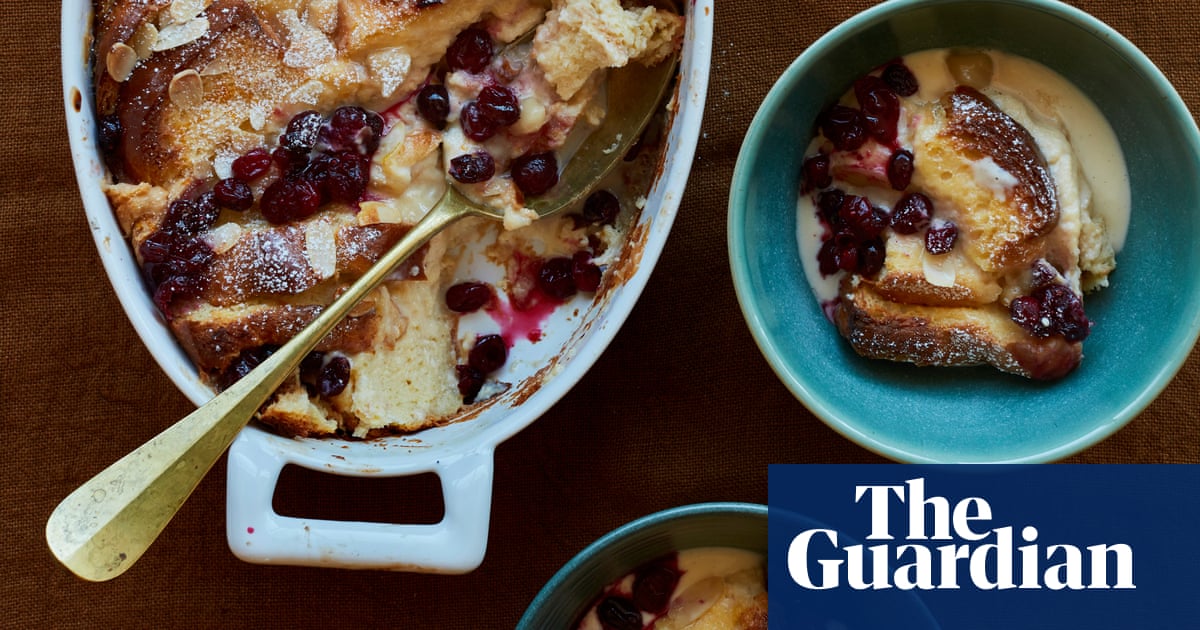
Like everyone, I am making sourdough, but I’m throwing away a lot of starter. What can I do with the discard?
Isla, Bristol
I’ve spent an abnormal amount of time Googling “sourdough discard recipes” since Dusty (my own starter) came into my life. For the uninitiated, every time you feed (AKA mix flour and water into) a starter, you first have to remove some of the existing mixture. So, in short, you’re going to have a lot of excess to play with.
Happily, not all roads lead to the compost bin. The undisputed queen of sourdough, Martha de Lacey, who, pre-coronavirus, ran classes from her east London home and has since taken things online with The Muff Kitchen, says: “Discard all your excess starter into what I call a ‘trash pot’ and keep it in the fridge. It will continue to ferment even if you don’t feed it, and will eventually get really acidic, smelly, runny and a little bit grey, but that’s fine.”
A sourdough starter is generally 50% flour and 50% water, so you can use any excess in any recipe that calls for flour and liquid: think pancakes, waffles, cookies, muffins, crumpets and batter for fried chicken. Brownies, De Lacey says, are particularly good, and you don’t need to add any flour: “It’s all discard. As flour ferments, the gluten breaks down and stops working. You want the gluten to be weak for brownies, so they’re fudgy and chewy, not cakey, so the older the discard, the better.”
Adding starter does something magical to the taste, says Edd Kimber, author of One Tin Bakes, out in June. He has been making sourdough, chocolate chip and banana bread muffins, the epitome of lockdown baking: “The best banana bread is when the fruit is so dark, it starts to turn into sugars, so discard pushes those funky, fermented flavours forward.”
Things aren’t all sweet, though. Kimber also uses discard in crackers, mixing it with olive oil, flour, salt and bicarb (to keep things light); you could even throw in some cheese. De Lacey, however, doesn’t add flour to her crackers, so their taste mimics that of a certain uncompromising spread: “The discard is strong and acidic, so by not adding flour, the sourness makes the crackers taste like Marmite.”
As it’s baking, there are a few basic rules to keep in mind. If a recipe calls for bicarb, you might need to up the quantity: “Bicarb is alkaline and starter is acidic,” De Lacey says, “so the bicarb is going to be reduced when you add starter.” Keep an eye on the liquids, too: the older the starter, the more liquid there will be, so some (light) mathematical adjustments may be required.
It’s not just the discard that’s in danger of being wasted, either, because – *whisper it* – there is only so much sourdough you can eat. Turn slices into croutons to round out a salad, or channel Feast’s own Thomasina Miers, who makes bread pudding even more joyous by soaking sourdough slices, raspberries and nectarines in custard, then tops with almonds and coconut flakes.
For the ultimate holiday-at-home vibes, though, Yotam Ottolenghi makes a lid for seafood stew with sourdough brushed with garlic, olive oil, parsley and basil. Close your eyes and you could almost be in the Mediterranean.
Do you have a culinary dilemma? Email feast@theguardian.com












